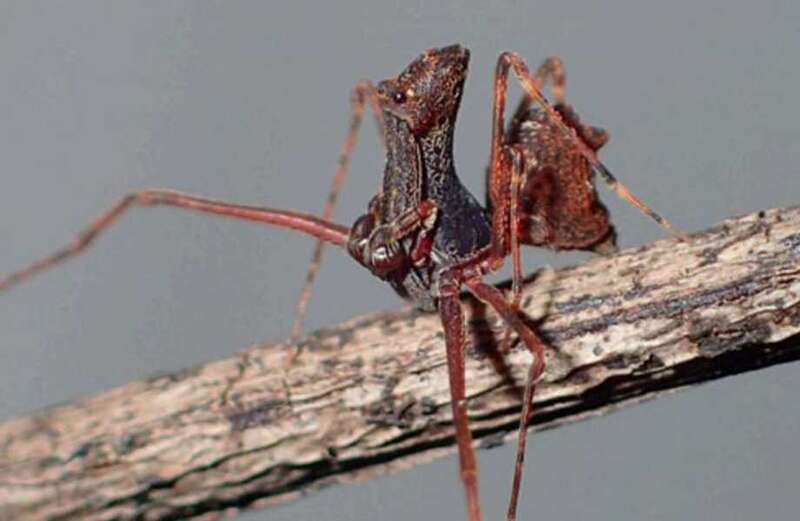SCIENTISTS have discovered a new spider species - and the animals are looking for their next meal.
Dubbed Whitsunday hinterland pelican spiders, these creatures are a "bizarre group" of predators found in Australia, according to a brand new study.




Over the past year, Australian researchers visited Conway National Park in Whitsunday, Queensland, several times to survey local wildlife and search for pelican spiders, also known as Austrarchaea.
Pelican spiders, which are sometimes referred to as "assassin spiders," feed on other creatures by capturing and manipulating them with their "long, spear-like" legs, according to a study published on May 14 in the peer-reviewed Australian Journal of Taxonomy.
The experts were searching for the "poorly researched" pelican spiders in the park and found eight unfamiliar-looking spiders, the study said.
 Man fined £165 after outraging the internet by dying puppy to look like Pikachu
Man fined £165 after outraging the internet by dying puppy to look like Pikachu
The researchers then realized they had discovered a new species.
Austrarchaea andersoni, or the Whitsunday hinterland pelican spider, has a reddish-brown color and an unusual body shape, the study reports.
The spiders are just over 0.1 inches long and have two pairs of "rudimentary horns" and "hump-like" bumps on their abdomens.
Pictures in the study show the spiders perched on a branch. The creatures are able to pull in and extend their legs.
When the spider's legs are pulled in, the predatory animal appears compact - but extending its legs shows the spider's unusual physique.
The scientists identified the new species by the spiders' physical features including its body shape compared to other pelican spiders.
The study reports that the spiders live in the leaves on the rainforest ground.
So far, the creatures have only been found in the Queensland park where they were first discovered.
Researchers said Austrarchaea andersoni is called "andersoni" after arachnologist Greg Anderson, who first collected the spiders in 2023.
 Dog who 'always melts hearts' with his smile hopes to find a loving family
Dog who 'always melts hearts' with his smile hopes to find a loving family
The species' common name refers to the park where it was discovered.
Whitsunday, Queensland, is a region on Australia's east coast about 750 miles north of Brisbane.
The Whitsunday hinterland pelican spiders examined in the study are now being preserved in 75% ethanol at the Queensland Museum in South Brisbane.
Researchers have not yet provided a DNA analysis of the new species.
The discovery of the killer spiders comes as another creepy creature was recently identified - but it existed millions of years ago.
ANOTHER CREEPY DISCOVERY
A Ph.D. student recently discovered a fossil that is the oldest ancestor of modern-day scorpions, spiders, and horseshoe crabs.
The fossils, which were originally found in the early 2000's, dated back 478 million years.
The find has been able to fill the massive gap between the modern creatures and the Cambrian period which was 505 million years ago.



































